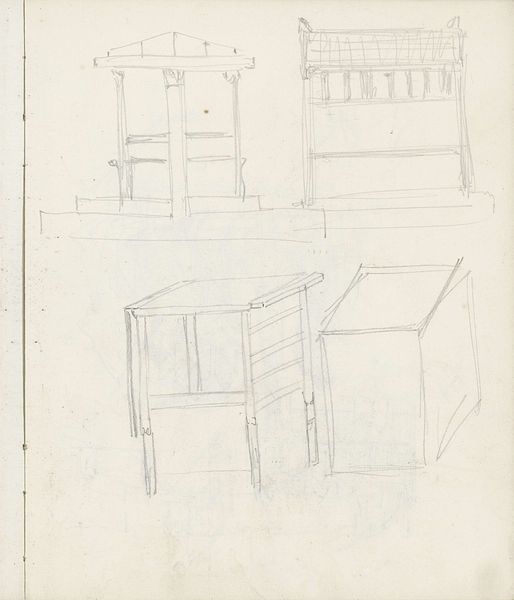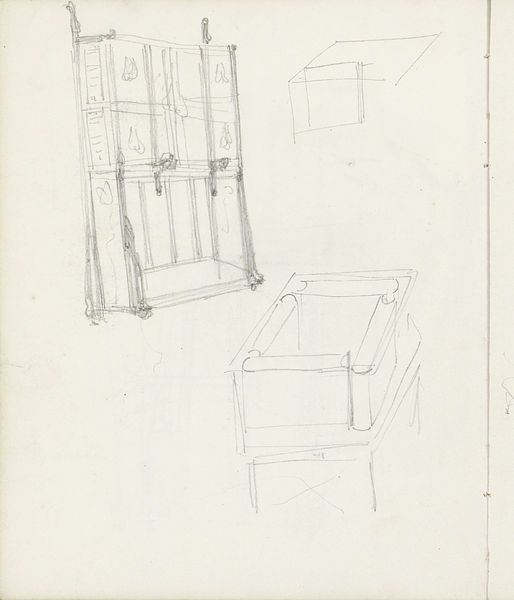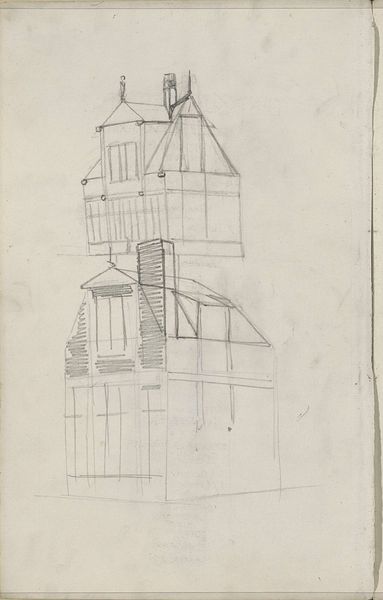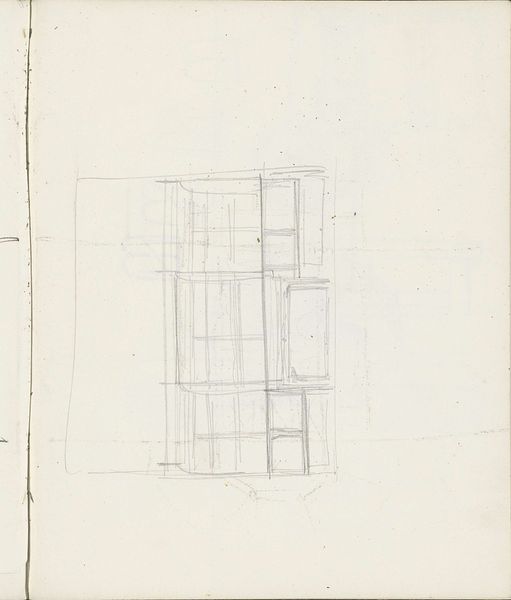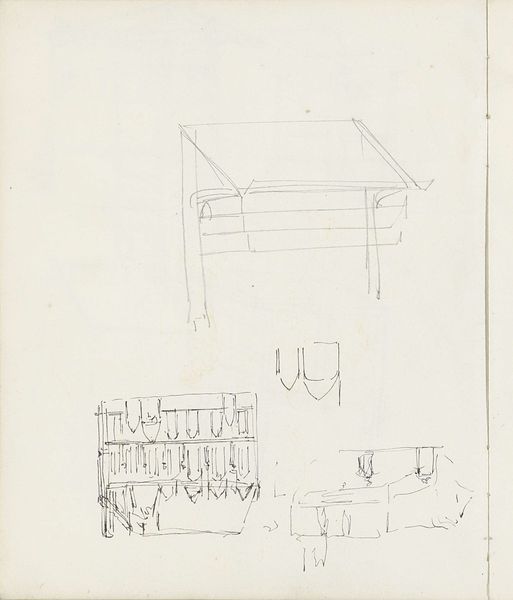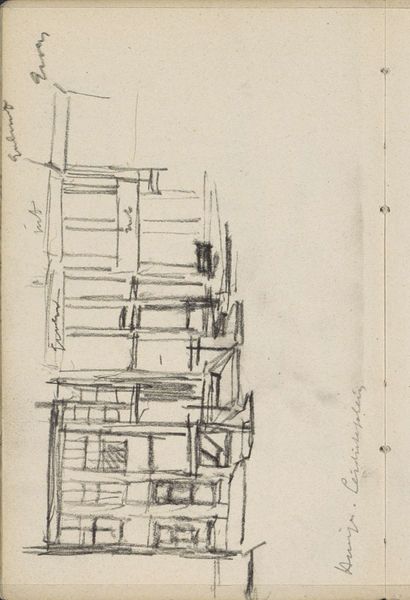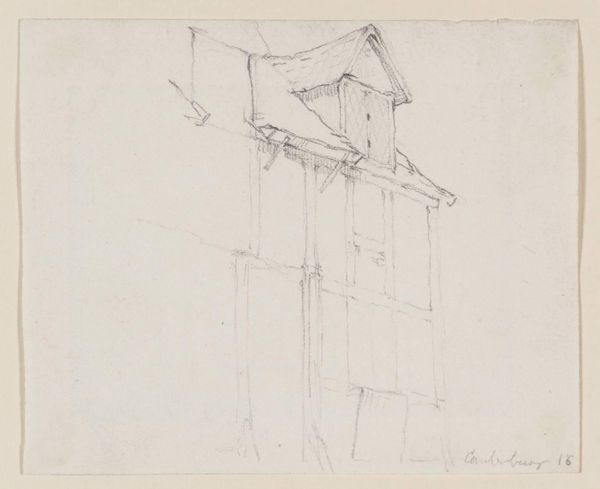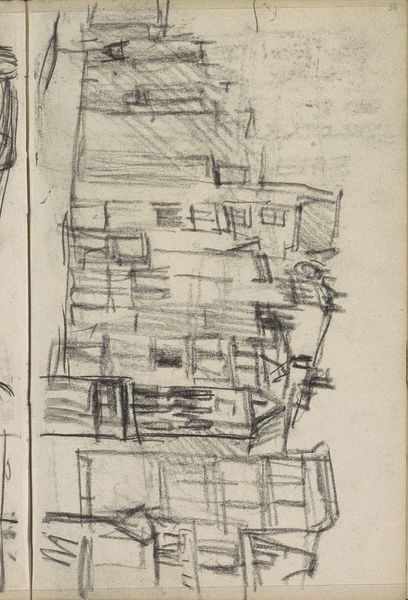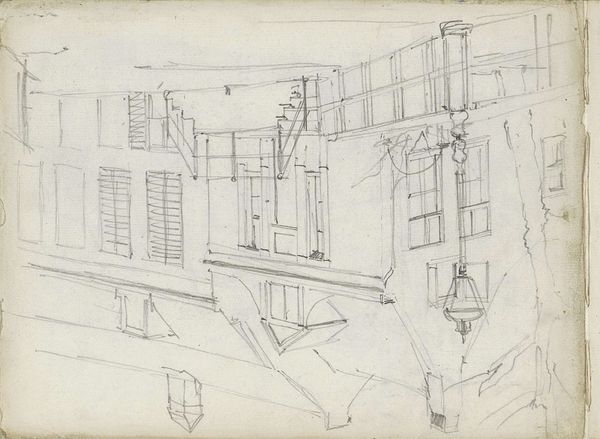
drawing, pencil, architecture
#
drawing
#
arts-&-crafts-movement
#
form
#
pencil
#
architectural drawing
#
architecture drawing
#
architecture
Copyright: Rijks Museum: Open Domain
Editor: This is "Ontwerp voor een meubel," a furniture design by Carel Adolph Lion Cachet, created around 1900. It’s a pencil drawing. I’m struck by how delicate the lines are, almost ethereal, yet they manage to convey the object's form. How would you interpret this work? Curator: The interest lies primarily in the articulation of form and function. Observe the artist's use of line: how the varying pressure creates a sense of depth and three-dimensionality, even in this preliminary sketch. The linearity isn't merely descriptive; it suggests movement and a dynamic relationship between the constituent parts. Editor: So you're saying it's less about what it *is*, a furniture design, and more about *how* it is represented? The lines, the depth created... Curator: Precisely. We see the inherent aesthetic qualities, like rhythm and balance, operating within the structure of the piece itself. Do you notice how the repeated vertical lines create a sense of stability, while the diagonal lines add a counterpoint of visual interest and tension? Editor: Yes, now that you mention it, the vertical and diagonal lines play off each other. And even though it's just a sketch, there's a clear attention to proportion. Curator: The design is subordinate to artistic consideration, thus it speaks about functional, constructed and representational aesthetics. The drawing style of the arts and crafts movement emphasizes clear craftsmanship. How form elevates its practical counterpart. Editor: That’s fascinating. I was so focused on the "furniture" aspect, I didn’t fully appreciate how the formal elements contribute to the overall design. Curator: Focusing on visual elements allow an enhanced awareness in art as an end to its function. The artistic significance of the object transcends its functional use. Editor: I will try and keep my eye focused on the formal elements going forward!
Comments
No comments
Be the first to comment and join the conversation on the ultimate creative platform.
